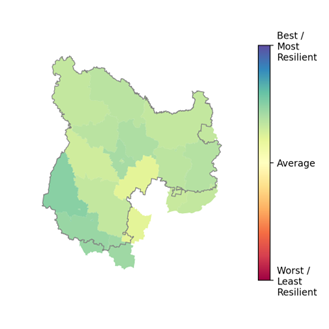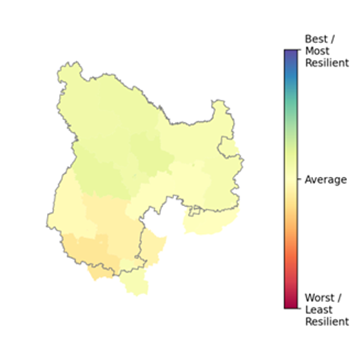Home » Your Local Area » Upper Lachlan
Local Profile for Upper Lachlan Shire Council
Upper Lachlan Local Government Area
Hazard Exposure Summary
Climate Change Data Summary
Risk Exposure Summary
Reference
Upper Lachlan Shire Council is a local government area (LGA) located in the Southern Tablelands region of New South Wales (NSW). The LGA covers an area of 7,102km² with an elevation of between 500m-1,000m. ¹
Upper Lachlan LGA is the traditional homelands of the Gundungurra people, with the Wiradjuri people acknowledged as sharing areas of traditional land and cultural significance in the region. ²
Upper Lachlan LGA is situated 45km west of Goulburn, 100km north of Canberra and approximately 130km southeast of Bathurst. The Upper Lachlan Shire sits on the Great Dividing Range. The northern boundary is the Abercrombie River, and to the south are the Wollondilly and Lachlan Rivers³.
Socio-Demographic Profile
In 2024, the estimated residential population for Upper Lachlan was 8,875 persons. ⁴
In 2021, based on the Australian Bureau of Statistics (ABS) 2021 census date, Upper Lachlan consisted of:
- Population – 8,494; ⁵
- Aboriginal and Torres Strait Islander population – 264; ⁶
- No of properties/dwellings – 4,589; ⁷
- Persons aged under 5 – 5.5% (470 persons); ⁸
- Persons aged over 65 – 25.1% (2,132 persons); ⁹
- Persons with disability – 6.0% (507 persons); 10
- Number of new residents – 381 (since 2021);
- Persons culturally and linguistically diverse (CALD) / non-English speaking at home – 2.5% (215 persons); and 11
- Top 5 languages (other than English) spoken at home are – Italian, German, Arabic, Spanish, French. 12
Based on recently revised population projects from the NSW Department of Planning, the population of the Council area is expected to grow to 9,791 people by 2041 (-931 by natural change and +2,228 by migration). A link to further information outlining growth trends in Upper Lachlan, including graphs can be found here: https://www.planning.nsw.gov.au/data-and-insights/population-projections/explore-the-data#-local-government-area-projections-
Economic profile
Upper Lachlan LGA economy is not overly diverse, and heavily reliant on the agriculture industry. 13
Agricultural, Forestry and Fishing productivity in Upper Lachlan was valued at $169 million in 2022/2023, with Agriculture contributing $154.9m (43%).14 In 2020/2021, the total value of agricultural output in Upper Lachlan Shire was $153m, with Livestock slaughtering accounting for 65.4% of this. 15
The top three industries employing local workers in Upper Lachlan LGA in 2022/2023 were: 16
- Agriculture, Forestry and Fishing (31.9%);
- Construction (13.6%); and
- Health Care and Social Assistance (9.4%).
Electricity, Gas, Water and Waste Services has the highest productivity by industry in 2022/2023. 17
Upper Lachlan Council area’s Gross Regional Product (GRP) was $0.49 billion in the year ending June 2023, growing 6.1% since the previous year. 18
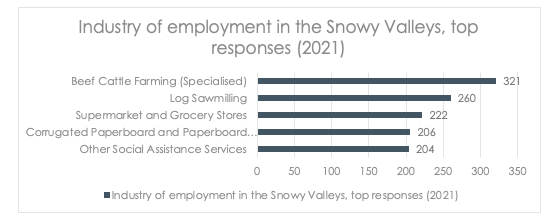
Environmental profile
The Upper Lachlan Shire sits atop the Great Dividing Range and has areas situated 1,000m above sea level which can be blanketed in snow during the winter months. The Shire is predominately rural with vast agricultural lands intermixed with vibrant green hinterlands, and conservation areas.
The main land uses in the Shire is grazing, followed by nature conservation, cropping and residential and farm infrastructure.
The high-quality agricultural soils support the Shire’s agricultural sector and maintain scenic natural areas such as the Abercrombie River, Blue Mountains, Keverstone and Tarlo National Parks.
The Shire is rich in untapped mineral deposits, which includes iron ore, aluminium and precious stones. 19
There are several wind farms utilising the Shire’s topography located at Crookwell, Gullen Range and Taralga. 20
Governance profile
The Upper Lachlan Shire is bounded by Hilltops Council to the west, Wingecarribee to the east, Goulburn Mulwaree to the south east, Queanbeyan-Palerang to the south, Yass Valley to the south west, and Cowra Shire, Bathurst Regional and Oberon Council to the north. The Shire is situated about 240 kilometres south of Sydney CBD and 140 kilometres from Canberra CBD.21
Sitting on the Great Dividing Range, the shire is divided into three (3) major centres, Crookwell, Gunning, Taralga, and several smaller villages. Upper Lachlan’s population primarily reside in the main township of Crookwell and smaller townships of Gunning and Taralga. 22
The Shire’s name derives from the Lachlan River which forms the north-western boundary. 23
The Council has 7 elected Councillors. The Mayor and Deputy Mayor are elected by the community and are recognised as the civic leaders of the community. 24
Hazard Exposure Summary
The LGA is vulnerable to a wide range of natural hazards, making it essential to understand the nature and extent of exposure to people, buildings, infrastructure, services, or natural resources to effectively assess and address associated risks.
Exposure can be seen in various forms:
- Relative exposure is a function of hazard, describing the frequency and magnitude of natural hazard events and capturing the compounding effect of multiple hazards (fire and flood for this analysis). Where a community is subject to both fire and flood, it is potentially less resilient than one exposed to a single hazard of the same frequency and magnitude;
- The physical exposure of a community is determined such that the quantum of exposed people, buildings, essential facilities, industry, and agriculture can be evaluated. The physical vulnerability of exposed elements is also important, such as the age and construction type of buildings (for example, buildings with raised floors are more resilient to flood as they provide greater protection to the occupants and their belongings, resulting in less loss of life and property); and
- Social vulnerability is determined by examining socio-economic and demographic factors that may exacerbate or ameliorate the effects of an external threat to a person’s life, livelihood, or assets. Examples of these types of indicators include age, occupation, health status, income and education.
The Resilience Blueprint identified the following hazards as relevant hazardous events for the southeast NSW region. In 2024 the State Disaster Mitigation Plan (SDMP) was implemented and any additional hazards or information regarding exposure of hazard in the region has been included below:
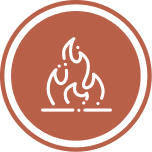 Bushfire and grassfire
Bushfire and grassfire
- The Southern Tablelands Region (which includes the Upper Lachlan, Yass Valley & Goulburn Mulwaree LGAs) has on average 265 bush fires per year, of which 5 could be considered to be large fires. It is noted that rainfall is both unreliable in the region, and generally at its lowest during the summer months. This is known to result in dry pastures over a large proportion of the shire, increasing grassfire risk. 25
- A number of large fires have also occurred within the Shire in recent years, including:
- The Wombeyan Caves fire in 2019/20 which resulting in significant damage to the land surrounding the caves causing their shut down; 26
- A series of bushfires impact Upper Lachlan In February 2023 27 and March 2023 (Curraweela Bushfire). 28
- Largest changes for bushfire weather in the Shire is expected to be during spring, with a projected earlier onset of bushfire season under a warmer climate;
- Bushfire have the potential to generate significant damage to and loss of infrastructure, and loss of life, and major impacts on ecosystems; and
- Based on potential event probability as provided by Risk Frontiers in 2021, annual average loss of residential, commercial and industrial buildings due to bushfire is estimated at 3 per cent under a RCP 4.5 scenario. This accounts for low probability but high-cost consequence of bushfire activity.
Actions taken or proposed:
- Following the March 2023 Curraweela Bushfire, Council has engaged with landowners and state agencies to work to allocating $640,000 of funding for the removal of damaged trees within the public road reserve, with restrictions preventing its use for addressing hazards on private properties. 29
- The Southern Tablelands Bush Fire Management Committee is updating the Bush Fire Risk Management Plan for Southern Tablelands. It identifies the bush fire risks in Upper Lachlan, Yass Valley & Goulburn Mulwaree LGAs and sets out the types of work scheduled to deal with the risk of bush fires.
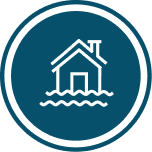 Flooding
Flooding
- Significant flood events have occurred in the Upper Lachlan Shire including in December 2010 and March 2012. The December 2010 storm was the more severe of the two events at the four villages. The heaviest rainfall occurred over the raindays of 9 and 10 December, preceded by heavy falls at the end of November. The catchments would therefore have been rather wet and losses due to infiltration quite small;
- The Upper Lachlan is a local government area (LGA) within the Lachlan River and Hawkesbury – Nepean catchments. Within this LGA, there are 3,250 residential dwellings and a population of 8,710. It is estimated that 11.5% of the population, or 1,000 people in Upper Lachlan are at risk of flooding; 30
- Flash flooding is known to impact several of the major villages in the Shire, including: 31
- At Crookwell, 103 residential properties would be flood affected;
- At Gunning, 34 residential properties would be flood affected at the 100 year ARI level of flooding. Seven of those properties would experience above-floor inundation up to 200 mm, while eight commercial properties and three public buildings would be flooded above floor level in the event of a 100 year ARI flood;
- At Collector, four residential properties would be flood affected at the 100 year ARI level of flooding, of which none would experience above-floor inundation; and
- At Taralga, 14 residential properties would be flood affected, of which two would experience above-floor inundation up to 200 mm in the event of a 100 year ARI flood.
- Based on potential event probability as provided by the Risk Frontiers, annual average loss of residential, commercial and industrial buildings due to flood is estimated at 10 per cent under a RCP 4.5 scenario. This accounts for low probability but high-cost consequence of flood activity.
Actions taken or proposed:
- Council has undertaken the Villages of Crookwell, Gunning, Collector and Taralga Floodplain Risk Management Study and Draft Plan (prepared by Lyall & Associates and Nexus Environmental Planning Pty Ltd.) to better understand current and future anticipated flood behaviour32.
- In 2021, the NSW Government prepared the Upper Lachlan Shire Total Flood Warning System: Investigation and Options Report. The recommended option involves the installation of additional rainfall and monitoring infrastructure in three of the four catchments and at Gunning33. This is currently being implemented.
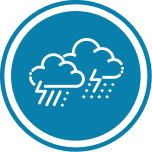 Severe storm
Severe storm
- Severe thunderstorms are the most common and most damaging types of storms in NSW. These storms have a short life span and only affect areas a few kilometres across. Although severe thunderstorms can occur at any time, there is a marked tendency for thunderstorms and severe thunderstorms to occur during months from October through to March. 34
- Severe storms are known to occur in the Shire. In October 2022, a severe storm significantly impacted Gunning, resulting in subsequent flooding which inundated 14 premises. 35
- East coast lows (most damaging storm type to impact the LGA) is expected to increase in frequency
- Extratropical lows and associated fronts and thunderstorms can cause significant risk, especially during summertime as they are a primary cause of dangerous bushfire weather
- Maximum annual windspeed is projected to increase across the Shire
- Based on potential event probability as provided by Risk Frontiers, annual average loss of residential, commercial and industrial buildings due to hail is estimated at 59 per cent (moderate to high probability with a high cost) under a RCP 4.5 scenario.
- Note: for the purposes of this report, cyclone was not commented on.
Actions taken or proposed:
- No actions have been taken or proposed to address severe storms by Council.
Note: for the purposes of this report, cyclone was not commented on.
 Snow
Snow
- Snow events can affect different parts of the LGA. In July 2015, a significant snow event resulted in multiple road closures and damage to buildings. This disrupted the Crookwell township for up to a week. 36 The storm also caused a power outage in Grabban Gully, nearby Crookwell. 37
- Priority roads identified to be patrolled as a priority include: 38
- Goulburn Road, which is considered the main arterial road for the region. This section of the road can become susceptible to icy surfaces (black ice);
- Binda Road, near the locality of “Wade’s Hill”;
- Peelwood Road;
- Laggan / Taralga Road;
- Grabben Gullen Road (which can receive significant snow coverage);
- Boorowa Road;
- Abercrombie Road (between Oberon and Taralga); and
- Taralga Road (between Taralga and Goulburn).
Actions taken or proposed:
- The State Emergency Service (SES) has implemented a South Eastern Region Snow Emergency Sub Plan with key strategies and actions in conjunction with Council.
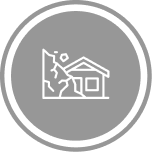 Landslide
Landslide
- Landslide can be triggered by severe weather events (e.g. heavy rainfall) or human activities (vegetation removal, overgrazing, slope modification, etc.). 39
- Following the fires around the Wombeyan Caves area in early-2020, a serious storm and rainfall event occurred. The fires had previously destroyed the vegetation impacted the soil integrity. The rainfall resulted in a series of approximately 15 major rockfalls along a 14km section of the Wombeyan Caves Road. 40
Actions taken or proposed:
- No actions have been taken or proposed to address landslide risks by Council.
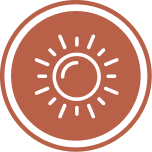 Heatwave
Heatwave
- Based on projections undertaken by Risk Frontiers in 2021, the largest heatwave increases will be seen during the summer months and high temperature extremes will occur more frequently during spring and autumn. This will have significant impacts on human health.
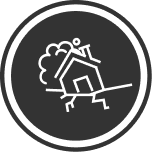 Earthquake
Earthquake
- Earthquake hazard in NSW is higher toward the south of the State around the ACT and near the Victoria border – particularly LGAs of Yass Valley, Upper Lachlan Shire and Queanbeyan-Palerang Region. 41
- The Dalton-Gunning Earthquake Zone has been assessed as one of the highest earthquake hazard areas in Australia with three instances of earthquakes of magnitude 5.5 or greater known to have occurred (November 1886, November 1934, and March 1949). 42 Specifically:
- The November 1934 impacted the town of Gunning, causing major damage, severely impacting stone and brick buildings. 43
- The 1949 earthquake severely impacted the town of Dalton where “buildings swayed crazily, walls cracked, chimneys toppled, water burst, and more than 100 bottles of liquor in an hotel were smashed.” 44
- More recently, a magnitude 3.2 earthquake hit gunning in September 2024, causing minor damage. 45
- On 9 August 1984, a magnitude 4 earthquake occurred which caused minor damage at Oolong (south of Dalton), damaging buildings in the locality. Buildings in Dalton were also affected where it knocked the cross crooked on St Matthews Anglican Church (in Jobson Street, Dalton). The epicentral intensity was relatively high because the earthquake was very shallow; and 46
- Based on potential event probability as provided by Risk Frontiers, annual average loss of residential, commercial and industrial buildings due to earthquakes is estimated at 28 per cent. This accounts for low probability but high cost consequence of earthquake activity.
Actions undertaken or proposed:
- No actions have been taken or proposed to address earthquake risks by Council.
Climate Change Data Summary

Heatwave – measured by number of days with temperatures greater than 35°C
Heatwaves are a critical climate hazard affecting health, infrastructure, and ecosystems. Heatwave risk can be measured by tracking the number of days per year with maximum temperatures exceeding 35°C. This analysis, undertaken by Risk Frontiers in 2021, drew on 20-year averages from historical climate reanalysis data and future climate model projections under a ‘medium’ emissions scenario, represented by RCP4.5 (see Figure 1 below).
The data highlights how the frequency and seasonality of high-temperature events are expected to shift over time in the LGA, informing the need for climate adaptation in infrastructure, health, and planning decisions.
Figure 1 – Frequency of days per year with temperature greater than 35 Celsius Degrees
(Values are 20-year averages for present day climate and change for future climate under the RCP4.5 scenario)
Key Findings:
- The magnitude of temperature extremes and frequency of hot days will increase in Upper Lachlan.
- The largest increases in heatwave and high temperature extremes will be seen during the summer months.
- The high temperature extremes will also occur more frequently during spring and autumn.

Drought – measured by Keetch-Byram Drought Index, soil moisture and annual precipitation
Drought is a complex hazard influenced by temperature, rainfall, and how water is retained in the landscape. To assess how drought conditions are projected to change in the LGA, this analysis undertaken by Risk Frontiers in 2021 uses three key climate indicators:
- Keetch-Byram Drought Index (KBDI) – a widely used index that estimates how dry the landscape is based on temperature and rainfall. It also reflects the flammability of surface fuels and is commonly used for fire management (see Figure 2 below);
- Soil moisture percentiles – a direct measure of how much water is retained in the soil compared to long-term conditions. Soil moisture is essential for agriculture, vegetation health, and ecosystem resilience (see Figure 3 below);
- Total annual precipitation – tracks overall rainfall trends, which are a key input for drought but must be considered alongside evaporation and temperature to understand drought risk fully (see Figure 4 below).
Figure 2 – Annual mean Keetch-Byram Drought Index (KBDI) drought index value normalised on a scale of 0-10, where 10 is the maximum drought possible
(Values are 20-year averages for present day climate and change for future climate under the RCP4.5 scenario)
Figure 3 – Annual mean soil moisture percentiles; values are calculated relative to present day climate, hence the 50% values for present day. Low values at 2070 are indicative of a drying landscape
(Values are 20-year averages for present day climate and change for future climate under the RCP4.5 scenario)
Figure 4 – 13 Total annual precipitation in mm per year
(Values are 20-year averages for present day climate and change for future climate under the RCP4.5 scenario)
These indicators are derived from climate model simulations using 20-year averages for present-day and future scenarios under RCP4.5. Together, they provide a fuller picture of both short-term and long-term drought potential, capturing the interplay between rainfall, heat, and water retention in the landscape.
Key Findings:
- The inland LGAs are more exposed and susceptible to drought, especially Upper Lachlan;
- Under future climate, by 2070 the magnitude of drought will increase across all LGAs, especially those already most affected which includes Upper Lachlan;
- By 2070 the magnitude of drought will increase across the Shire as soil moisture declines by 2070, with the greatest impact occurring during the winter and spring;
- Changes in total annual rainfall are less than the projected changes in soil moisture and drought, suggesting that the increase in drought is being driven primarily by increasing temperatures and their effect on evapotranspiration.

Bush and grassfire – measured by the annual maximum Forest Fire Danger Index (FFDI)
Bushfires and grassfires are among the most dangerous and disruptive climate-related hazards in South-East NSW Region. The annual maximum Forest Fire Danger Index (FFDI) is the nationally recognised measure for assessing bushfire danger and is widely used by emergency services to guide fire warnings, restrictions, and preparedness. FFDI is a composite index that incorporates temperature, wind speed, humidity, and recent rainfall to estimate how dangerous fire weather is on a given day.
This analysis undertaken by Risk Frontiers in 2021 used 20-year averages from historical reanalysis data and future climate projections under the RCP4.5 scenario (see Figure 5 below). This indicator helps identify trends in both the severity and seasonal timing of fire weather across the LGA.
Figure 5 – Magnitude of bushfire weather severity as represented by the annual maximum FFDI
(Values are 20-year averages for present day climate and change for future climate under the RCP4.5 scenario)
Key Findings:
- The frequency of dangerous bushfire weather days and the magnitude of bushfire weather extremes will increase particularly in the Upper Lachlan; and
- The largest changes for bushfire weather across southeast Australia are expected to be occurring during the spring, with a projected earlier onset of the bushfire season under a warmer climate.

Extreme rainfall and flooding –measured by daily precipitation over 30mm
Flooding poses a significant hazard to infrastructure, communities, and emergency services. This analysis uses the frequency of very heavy rainfall days (daily rainfall greater than 30mm) as an indicator of flood risk. This threshold (i.e., days with more than 30mm of rain often) is a recognised benchmark in climate and hydrological studies to identify rainfall events that can overwhelm stormwater systems, trigger flash flooding, and lead to significant overland flow.
Projections done by Risk Frontiers in 2021 compared 20-year averages for present day conditions with those for 2030 and 2070 under the RCP4.5 scenario (see Figure 6 below). This helps to understand how the intensity of rainfall events changes, which is crucial for flood management, infrastructure design, and emergency planning.
Figure 6 – Frequency of very heavy rainfall days (>30mm)
(Values are 20-year averages for present day climate and change for future climate under the RCP4.5 scenario)
Key Findings:
- The primary driver of year-to-year variability in rainfall will continue to be the tropical climate drivers of Indian Ocean Dipole (IOD), El Niño Southern Oscillation (ENSO) and the Inter-decadal Pacific Oscillation (IPO). Projections for Pacific climate are indicating an increase in ENSO amplitude, meaning both El Niño and La Niña events will be stronger;
- Extreme rainfall events will produce higher rainfall totals due to the physical relationship between a warmer temperatures and higher atmospheric moisture capacity; and
- Higher rainfall totals may lead to higher flood levels during flooding events, but the frequency of these events will not differ significantly from present.

Severe storm, wind and hail – measured by East Coast Low (ECL) days and annual windspeed
Severe storms, ranging from East Coast Lows to thunderstorms and hail events, pose a recurring hazard to communities and infrastructure. This analysis uses two key indicators to evaluate storm-related risk under a changing climate:
- Frequency of East Coast Low (ECL) days – ECLs are among the most damaging storm systems affecting the region, often associated with extreme winds, heavy rainfall, large waves, and coastal erosion. Tracking their frequency is important for understanding long-term storm risks; and
- Annual maximum windspeed – is used to assess the strength of storm systems and frontal weather events that can bring down trees, damage infrastructure, and increase fire danger.
These indicators help assess changes in both the occurrence and severity of damaging weather systems.
Figure 7 – Frequency of east coast low days
(Values are 20-year averages for present day climate and change for future climate under the RCP4.5 scenario)
Figure 8 – Annual maximum windspeed (km/hr).
(Values are averaged across each LGA and calculated as 20-year averages for present day climate and change for future climate under the RCP4.5 scenario—windspeeds at individual locations and years will be significantly higher than the averages.)
Projections done by Risk Frontiers in 2021 were based on 20-year averages comparing present-day conditions with future scenarios for 2050 and 2070 under RCP4.5. This helps identify trends in the intensity and potential impacts of storm systems in the LGA which may influence risk planning, emergency management, and infrastructure resilience.
Key Findings:
- Under present day climate, the Council area is exposed to several types of storms, including east coast lows (ECL), extra-tropical lows, fronts, snowstorms, thunderstorms, and hailstorms.
- ECL are one of the most damaging storm types to impact the Council area. ECL frequency is expected to increase slightly under future climate which is consistent with an expectation of increased large-scale interactions between warm and cool air masses as the climate warms.
- Storms tend to be more frequent during La Niña events and less frequent during El Niño events. This relationship is not expected to change under a warming climate.
- Extratropical lows and associated fronts and thunderstorms can cause significant risk, especially during summertime when they are a primary cause of dangerous bushfire weather.
- Maximum annual windspeed is projected to increase across the Council area, suggesting an increase in the strength of frontal systems.
NARCLiM 2.0 findings for the Upper Lachlan region
In 2022 NARCliM 2.0 climate data was publicly released – this is the most up-to-date regional climate modelling available for NSW and ACT and is used Government planning, assessments, and strategies.
Table 2 below describes the anticipated future climate projections specific to the Upper Lachlan LGA based on NARCLiM 2.0 SSP1-2.6 (low emissions) and SSP3-7.0 (high emissions) scenarios.
This information can also be viewed through an interactive climate change projection map via https://www.climatechange.environment.nsw.gov.au/projections-map
Table 2 – NARCLiM 2.0 Emissions Scenario projections – Upper Lachlan
Risk Exposure Summary
Hazards
A hazard is a natural process or occurrence, a source event which has the potential to result in harm or cause loss or damage depending on exposure. Risk exposure is the degree to which people, places, or assets are at risk from hazards.
The South Eastern Regional Emergency Management Plan has identified the following hazards as having risk of causing loss of life, property, utilities, services and/or the community’s ability to function within its normal capacity:
|
|
|
In 2024, the NSW State Disaster Mitigation Plan identifies these additional 3 hazards having the same risk to life and property: 48
- Coastal hazard (erosion and inundation)
- Storms and cyclones, and
- tsunami
The Climate modelling performed by Risk Frontiers in 2021 as part of the Resilience Blueprint found that Upper Lachlan has:
- Low/moderate flood hazard risk with 6.38% of the land within a modelled floodplain. This is follows the Lachlan and Crookwell Rivers in west and other systems and smaller tributaries in the east (Figure 9); and
- Moderate/medium bush and grassfire hazard risk with a modelled annual burning probability of 0.28%. This risk area is largely confined to the heavily vegetated areas on the Shire’s northern borders (Figure 10).
A dark blue indicates a flood plain, the lighter colour out of it.
The flood hazard index uses a map of modelled flood plains identified by several geographical/geospatial variables including different river types, river stream order, distance to river network, land cover, soil type, average slopes in known flood areas, relative changes in elevation near rivers, and river basin characteristics.
Figure 10 – Upper Lachlan Bushfire Hazard Index
Life, Property, Economic and Environmental Loss Risk
Fatalities and life loss
Figure 11 – Upper Lachlan Fatalities from Natural Hazard
As shown in Figure 11 above, the risk that is posed to life is very difficult but a reality to of natural hazards. From a human health perspective, life loss throughout the region from 1900 to 30 June 2020 has been analysed using PerilAUS, Risk Frontiers’ database of natural hazard impacts.
The analysis found that in Upper Lachlan, floods have resulted in the most fatalities – 7 fatalities, followed by bushfire (1 fatalities), gust (1 fatality), and lightning (1 fatality).
There were an extra two deaths (due to bushfire) for which the exact location could not be identified occurring either in the Shire, Goulburn-Mulwaree or Wingecarribee LGAs.
Despite the above, more lives have been lost as a result of the impacts of disaster events across the Upper Lachlan Shire in the days, weeks, months and years that follow. The physical and mental health toll of events is enormous.
Health issues and fatalities are not captured – data in these regards is difficult to bring together but does not change the reality of the pervasive impact of disasters.
Impact on Property and Infrastructure
Figure 12 – Distribution of the Average Annual Loss (AAL) of infrastructure by hazard for Upper Lachlan
In terms of the risks posed to property and infrastructure, Risk Frontiers’ Natural Catastrophe loss models have been used to estimate the financial cost, or Average Annual Loss (AAL) across four key hazards in the Shire being bushfire, flood, hailstorm and earthquake. The models evaluated losses for commercial, residential and industrial properties.
Under current conditions, the overall baseline AAL for Upper Lachlan is approximately $1.4 million.
The analysis found that riverine flood is the most significant natural hazard accounting for 64% of the AAL, followed by hail (27%) and earthquake (13%).
Future climate projections indicate that the AAL in Upper Lachlan will be driven by fire and flood losses. Losses are projected to increase by 25% for fire and 2% for flood by 2070 under a RCP 4.5 scenario (see Figure 12 above).
Average Annual Loss identified in the State Disaster Mitigation Plan
The State Disaster Mitigation Plan (SDMP) identified that the Upper Lachlan LGA has the third highest bushfire risk (economic environment) of all LGAs in NSW (behind Carrathool and Murrumbidgee LGAs). The SDMP also noted that the Upper Lachlan LGA has the second highest earthquake risk for both social environment and natural environment. 49
The SDMP identified that Earthquake hazard in NSW is higher toward the south of the State around the ACT and near the Victoria border – particularly LGAs of Yass Valley, Upper Lachlan Shire and Queanbeyan-Palerang Region. Upper Lachlan is identified as being within the top 3 LGAs in NSW with the second highest social environmental exposure to earthquakes (behind Yass Valley in first), and the second highest natural environmental exposure to earthquakes (behind Snowy Valleys in first).
This means that a bushfire would be particularly impactful in Eurobodalla, with impacts identified in Table 3 below.
Table 3: Summary of impacts of earthquakes identified in the SDMP
Additionally, in 2024 the SDMP indicates that the AAL in Upper Lachlan for built environment in 2023 consisted of the following: 51
- Coastal hazard (erosion and inundation) – Very Low;
- Storms – Very Low;
- Cyclones – Very Low; and
- Tsunami – not recorded but noted as a rare event.
Editors note: the SDMP does not include specific AAL per LGA. It is colour coded on a scale from $0m to $112m.
Environmental Loss Risk
Risks to threatened flora, fauna and ecological communities from fire and flood were analysed using the following values:
|
|
|
The fire and flood indices were overlaid with an exposure index locating threatened flora, fauna and ecosystems along with agricultural lands. The analysis found that there are:
- Fauna exposure is medium. There are 24 different vulnerable animal species in the Shire, of which 14 are vulnerable, 5 are endangered, and 5 are critically endangered.
- Flora exposure is medium. There are 40 different vulnerable plant species in the Shire, of which 26 are vulnerable, 11 are endangered and 3 are critically endangered.
- Ecological community exposure is high. There are 4 different vulnerable ecological communities in the Shire, of which 2 are endangered and 2 are critically endangered.
The analysis also that the natural environment encompasses 26.33% of the Shire (6.35% of which is protected), 47.44% devoted to agriculture and farming and the remaining 26.23% is developed built environment.
The total maximum above ground biomass (indicating the potential vegetation density the LGA could support) is low/moderate with 6,034 tonnes of dry matter over the LGA. The overall environment exposure in the Upper Lachlan is medium as seen in Figure 13.
Agricultural Productivity
There is a correlation between agricultural productivity and climate parameters representing temperature and hydroclimate variability. Productivity of beef and sheep operations tends to be higher during years that are wetter and cooler with retained soil moisture, and low risk of consecutive dry days.
This correlation is particularly significant for sheep, but not as significant for beef however, there are there are sensitivities to hot days and drought conditions as shown in Figure 14.
Figure 14: Correlation between Agricultural Operations and Climate Parameters in Upper Lachlan
Vulnerability and Capacity
Resilience is generally regarded as a function of the intersection of relative exposure, social vulnerability and community capacity:
- Relative exposure is a function of hazard, describing the frequency and magnitude of natural hazard events and capturing the compounding effect of multiple hazards (fire and flood for this analysis).
- Physical exposure of a community is determined such that the quantum of exposed people, buildings, essential facilities, industry, and agriculture can be evaluated.
- Social vulnerability is determined by examining socio-economic and demographic factors that may exacerbate or ameliorate the effects of an external threat to a person’s life, livelihood, or assets.
- Community capacity to resist, avoid and / or adapt to a disaster and to use these abilities to create security either before or after a disaster can be determined by examining several factors.
For each of these measurement framework indicators, an index has been produced by a weighted average of each metric contributing to the category. An analysis of the measurement framework indicators for each Statistical Area 1 (SA1) across South East NSW culminates as an integrated index of resilience; Figure 15 and Figure 16 shows community resilience indices for Upper Lachlan.
In the Upper Lachlan:
- The mean relative exposure component of the resilience index is average for bush/grass fire and extremely high average for flood. There are no SA1s scoring low to extremely low for either resilience to bush/grass fire or flood in the Upper Lachlan (see Figure 18 and Figure 19 below);
- There are no SA1s scoring low to extremely low for the relative exposure component of resilience to either bush/grass fire or flood;
- The Shire’s mean social vulnerability score is low average. 30.1% of the population reside in SA1s scoring low or worse for the social vulnerability component of resilience (see Figure 20 below); and
- The mean community capacity component of the resilience index is average for both bush/grass fire and flood. 8.4% of the population reside in SA1s scoring low or worse for the community capacity component of resilience to flood and 8.6% residing in SA1s scoring low or worse for the community capacity component of resilience to bush/grass fire (see Figure 21 and Figure 22 below).
Gaps in Data
While the Upper Lachlan Shire Local Profile is supported by comprehensive climate modelling and regional hazard assessments, several critical data gaps remain. These limitations reduce the precision of local disaster risk reduction (DRR) planning and resilience-building initiatives.
Health and housing vulnerability data: Spatially specific data on aged care residences, disability support needs, and the location of vulnerable housing types (e.g., relocatable homes or dwellings built before modern building codes) is currently unavailable. This data is essential for preparing inclusive evacuation and relief plans.
Community preparedness and adaptive capacity: There is no recent community-level data measuring awareness of hazard risks, engagement in preparedness activities, or volunteer capacity in emergency services. These indicators are key to understanding community resilience.
Economic disruption and recovery data: Although agricultural and economic productivity data is available, there is limited insight into how past disasters (e.g., floods, bushfires, storms) have affected business continuity, insurance uptake, and workforce stability across the Shire.
Historical event records for snow, hail and earthquakes: While several events are mentioned (e.g., 2015 snowstorm, 2022 hail, past earthquakes), a centralised local archive of impacts, such as cost estimates, infrastructure disruption, and community recovery, remains unavailable.
Interdependency of infrastructure networks: There is no modelling available showing how disruptions to transport, electricity, telecommunications, and water infrastructure would cascade across systems, especially during compound events such as snow followed by flood or storm.
Monitoring and evaluation systems: Upper Lachlan lacks a framework for tracking changes in vulnerability, hazard exposure, and resilience outcomes over time. This hinders the ability to evaluate the effectiveness of investments in DRR.
Local Flood Sub-Plan (Volume 2): There is currently no Volume 2 of a Local Flood Sub Emergency Plan publicly available. This plan would typically document updated flood mapping, asset risk, and flood response procedures at the local level.
Integration of hazard overlays into planning instruments: While hazard data exists (e.g., fire and flood overlays), there is limited evidence that these are fully embedded within the Local Environmental Plan (LEP) or Development Control Plan (DCP), limiting the effectiveness of risk-informed development controls.
Reference
- Upper Lachlan Shire Council, 2020, Local Strategic Planning Statement. Available online at https://www.upperlachlan.nsw.gov.au/wp-content/uploads/2022/12/Local-Strategic-Planning-Statement.pdf
- .idcommunity, 2024, Upper Lachlan Shire About the profile areas. Available online at https://profile.id.com.au/upper-lachlan/about
- Upper Lachlan Shire Council, 2020, Local Strategic Planning Statement. Available online at https://www.upperlachlan.nsw.gov.au/wp-content/uploads/2022/12/Local-Strategic-Planning-Statement.pdf
- .idcommunity, 2024, Welcome to Upper Lachlan Shire Community Profile. Available online at https://profile.id.com.au/upper-lachlan
- .idcommunity, 2021, Upper Lachlan Shire Population and dwellings. Available online at https://profile.id.com.au/upper-lachlan/population
- Ibid
- Ibid
- idcommunity, 2021, Upper Lachlan Shire Five year age groups. Available online at https://profile.id.com.au/upper-lachlan/five-year-age-groups?WebID=10
- Ibid
- idcommunity, 2021, Upper Lachlan Shire Need for assistance. Available online at https://profile.id.com.au/upper-lachlan/assistance?WebID=10
- idcommunity, 2021, Upper Lachlan Shire Language used at home. Available online at https://profile.id.com.au/upper-lachlan/language?WebID=10
- Ibid
- Upper Lachlan Shire Council, 2020, Local Strategic Planning Statement. Available online at https://www.upperlachlan.nsw.gov.au/wp-content/uploads/2022/12/Local-Strategic-Planning-Statement.pdf
- idcommunity, 2021, Upper Lachlan Shire Value added. Available online at https://economy.id.com.au/upper-lachlan/value-add-by-industry
- idcommunity, 2021, Upper Lachlan Shire Agriculture. Available online at https://economy.id.com.au/upper-lachlan/value-of-agriculture
- idcommunity, 2023, Upper Lachlan Shire Employment by industry (Total). Available online at https://economy.id.com.au/upper-lachlan/employment-by-industry
- idcommunity, 2023, Upper Lachlan Shire Worker productivity. Available online at https://economy.id.com.au/upper-lachlan/worker-productivity-by-industry
- idcommunity, 2023, Upper Lachlan Shire Gross product. Available online at https://economy.id.com.au/upper-lachlan/gross-product
- Upper Lachlan Shire Council, 2020, Local Strategic Planning Statement. Available online at https://www.upperlachlan.nsw.gov.au/wp-content/uploads/2022/12/Local-Strategic-Planning-Statement.pdf
- idcommunity, 2023, Upper Lachlan Shire Locality snapshot. Available online at https://profile.id.com.au/upper-lachlan/locality-snapshots
- Ibid
- Ibid
- Ibid
- Upper Lachlan Shire Council, 2025, Councillors. Available online at https://upperlachlan.nsw.gov.au/council/councillors/
- Southern Tablelands Bush Fire Management Committee, 2018, Bush Fire Risk Management Plan. Available online at https://www.rfs.nsw.gov.au/__data/assets/pdf_file/0012/2631/Southern-Tablelands-BFRMP.PDF
- Regional NSW, 2020, REDS Impact Review – Southern Tablelands REDS Fire Impact Addendum. Available online at https://www.nsw.gov.au/sites/default/files/2020-05/Southern%20Tablelands%20REDS%20fire%20impact%20addendum%C2%A0.pdf
- Department of Home Affairs, 2023, Upper Lachlan and Yass Valley NSW Bushfires: 11 Feburary 2023 onwards. Available online at https://www.disasterassist.gov.au/Pages/disasters/current-disasters/New-South-Wales/upper-lachlan-yass-valley-nsw-bushfires-11-february-2023.aspx
- Department of Home Affairs, 2023, Upper Lachlan Bushfires: from 16 March 2023. Available online at https://www.disasterassist.gov.au/Pages/disasters/current-disasters/New-South-Wales/upper-lachlan-bushfires-from-16-march-2023.aspx
- Upper Lachlan Shire Council, 2024, Curraweela Tree Mitigation. Available online at https://upperlachlan.nsw.gov.au/latest-news/curraweela-tree-mitigation/
- NSW State Emergency Service, 2025, Local Flood Insights: Lachlan River. Available online at https://storymaps.arcgis.com/stories/bf87619be9ba46a2bbe2ee0cf2f265ba
- Lyall & Associates and Nexus Environmental Planning Pty Ltd., 2017, The Villages of Crookwell, Gunning, Collector and Taralga Floodplain Risk Management Study and Draft Plan. Available online at https://upperlachlan.nsw.gov.au/wp-content/uploads/2022/12/Floodplain-Risk-Management-Study-and-Plan-Volume-1-%E2%80%93-Report.pdf
- Ibid.
- Manly Hydraulics Laboratory, 2021, Upper Lachlan Shire Total Flood Warning System Investigation and Options Report. Available online at https://flooddata.ses.nsw.gov.au/dataset/upper-lachlan-shire-flood-warning-system-options-report
- NSW Reconstruction Authority, 2024, State Disaster Mitigation Plan. Available online at https://www.nsw.gov.au/sites/default/files/noindex/2024-02/State_Disaster_Mitigation_Plan_Full_Version_0.pdf
- Upper Lachlan Shire Council, 2022. Severe storm event rocks the town of Gunning. Available online at https://upperlachlan.nsw.gov.au/latest-news/severe-storm-event-rocks-the-town-of-gunning/
- South Eastern Region Emergency Management Committee, 2023, South Eastern Region Snow Emergency Sub Plan. Available online at https://www.ses.nsw.gov.au/sites/default/files/document/south-eastern-regional-snow-plan-nov-2023-endorsed.pdf
- ABC News, 2015, Snow coats parts of New South Wales with falls of up to 20cm in some areas. Available online at https://www.abc.net.au/news/2015-07-17/snow-coats-parts-of-nsw/6626632
- Ibid.
- NSW Reconstruction Authority, 2024, State Disaster Mitigation Plan 2024-2026. Available online https://www.nsw.gov.au/sites/default/files/noindex/2024-02/State_Disaster_Mitigation_Plan_Full_Version_0.pdf
- ABC News, 2020, ‘We won’t be reopening it’: What happens when the road you live on could be closed for good. Available online at https://www.abc.net.au/news/2020-04-15/wombeyan-caves-road-blocked-after-bushfire-and-flood/12140606
- NSW Reconstruction Authority, 2024, State Disaster Mitigation Plan 2024-2026. Available online https://www.nsw.gov.au/sites/default/files/noindex/2024-02/State_Disaster_Mitigation_Plan_Full_Version_0.pdf
- Marion Leiba (Geoscience Australia), 2007, Earthquakes in the Canberra Region. Available online at https://www.ga.gov.au/bigobj/GA11006.pdf
- The Courier Mail, 1934, Severe Earthquake Shakes N.S.W: Extensive Damage in Country Town (accessed through Trove). Available online at https://trove.nla.gov.au/newspaper/article/35621385
- Marion Leiba (Geoscience Australia), 2007, Earthquakes in the Canberra Region. Available online at https://www.ga.gov.au/bigobj/GA11006.pdf
- 9News, 2024, Small NSW town Gunning rattled by 3.2-magnitude earthquake. Available online at https://www.9news.com.au/national/earthquake-hits-nsw-town-gunning/224199ba-df18-4ff9-a4b7-af39a69e3eaa
- Marion Leiba (Geoscience Australia), 2007, Earthquakes in the Canberra Region. Available online at https://www.ga.gov.au/bigobj/GA11006.pdf
- South Eastern Regional Emergency Management Committee, 2021, South Eastern Emergency Management Plan’ (updated October 2023). Available online at https://www.nsw.gov.au/sites/default/files/noindex/2023-10/South_East_Region_EMPLAN_v2.1.pdf
- NSW Reconstruction Authority, 2024, State Disaster Mitigation Plan 2024-2026. Available online https://www.nsw.gov.au/sites/default/files/noindex/2024-02/State_Disaster_Mitigation_Plan_Full_Version_0.pdf
- NSW Reconstruction Authority, 2024, State Disaster Mitigation Plan. Available online at https://www.nsw.gov.au/sites/default/files/noindex/2024-02/State_Disaster_Mitigation_Plan_Full_Version_0.pdf
- Ibid.
- Ibid.




















